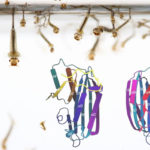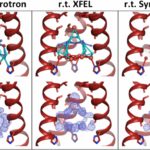Many of the chemicals used to deter or eliminate disease-carrying mosquitoes can pollute ecosystems and drive the evolution of even more problematic, insecticide-resistant species – but thankfully, we may have better options soon.
Biosciences Area 2020 LDRD Projects
The projects of 14 Biosciences Area scientists and engineers received funding through the FY20 Laboratory Directed Research and Development (LDRD) program. The funded projects span a diverse array of topics and approaches including: developing closed-loop plastics from biogenic feedstocks; reimagining a root system optimized for plant-microbe interactions; and creating computational tools for extracting macromolecular conformational dynamics. Lab-wide, 96 projects were selected from a field of 168 proposals. Biosciences Area efforts account for 18.5 percent of the $23 million allocated.
Biosciences Area FY19 LDRD Projects
The projects of 13 Biosciences Area scientists and engineers received funding through the FY19 Laboratory Directed Research and Development (LDRD) program. The funded projects span a diverse array of topics and approaches including the harnessing of microbiome data to uncover patterns of mutualism, evaluating radiobiological effects of laser-accelerated ion beams, improving bioenergy yield under drought stress, and the application of machine learning in tomogram segmentation. Lab-wide, 89 projects were selected from a field of 158 proposals. Biosciences Area efforts account for 15.07 percent of the $22.2 million allocated.
Room Temperature XFEL Provides Clearest View Yet of Water Networks in Influenza M2 Proton Channel
Molecular Biophysics & Integrated Bioimaging (MBIB) Division scientists Aaron Brewster, Nicholas Sauter, and James Fraser were part of an international team led by William DeGrado at UCSF that used an X-ray free-electron laser (XFEL) source to visualize the arrangement of water molecules inside the influenza matrix 2 (M2) channel at room temperature. The M2 channel of influenza A is essential for the reproduction of the flu virus, making it a target for therapeutics, and it is also a model system for studying how protons are transported across a membrane bilayer. The XFEL method overcomes the limitations of previous crystallographic structures obtained using synchrotron radiation with cryocooling. While cryocooling helps to preserve crystals against rapid radiation damage, it imparts an artificially higher degree of order of the water molecules than structures obtained near room temperature. By using room temperature XFEL to study the M2 channel at various pH conditions, the researchers have gained a more accurate picture of the behavior of water molecules and their role in proton transport in these channels. The study was published in the Proceedings of the National Academy of Sciences.
Brain-Inspired Chips for Big Data Science
With funding from the Department of Energy’s (DOE’s) Laboratory Directed Research and Development (LDRD) program, Berkeley Lab researchers from the Computational Research Division (CRD) and the Biosciences Area are collaborating to explore how brain-inspired computer chips might benefit science.
Was this page useful?







